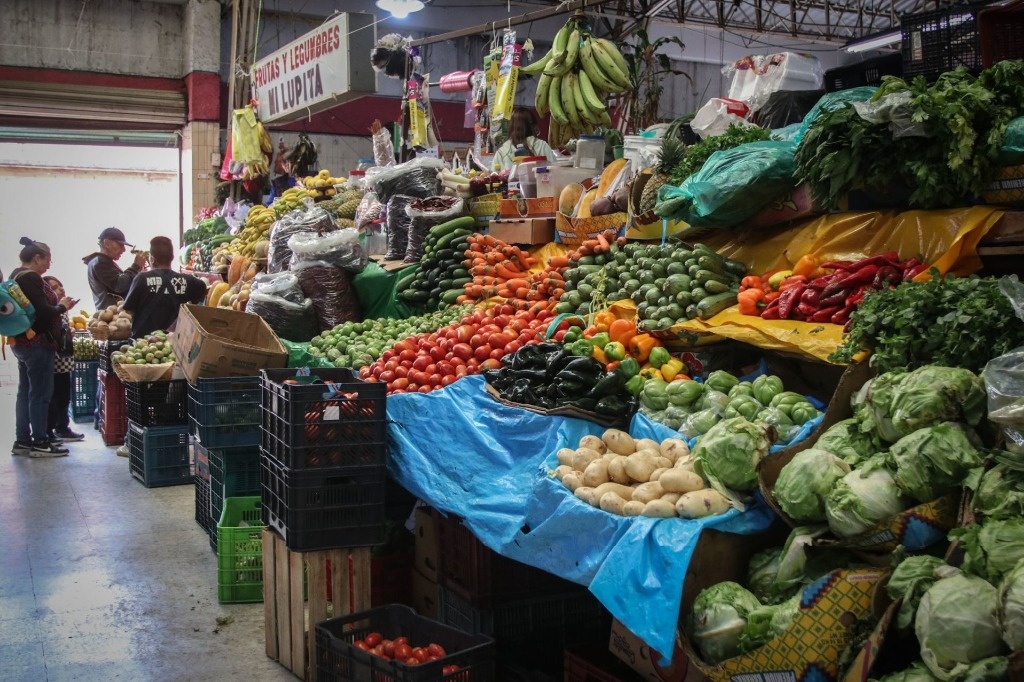Mexico City. Overall inflation in Mexico accelerated for the fifth consecutive month, reaching an annual rate of 5.57 percent in July, the largest increase in consumer prices since May 2023, data from the National Institute of Statistics and Geography (Inegi) reported.
The largest increase in inflation in the country, again, was in fruits and vegetables, with an annual increase of 23.6 percent, its highest rise since August 2017, when it reached a rate of 25.82 percent; and in agricultural products, 13.72 percent, its highest rate since October 2022 (14.25 percent).
According to the national consumer price index (INPC), which was released this morning by Inegi, inflation in July had a monthly variation of 1.05 percent, above what was expected by the consensus of analysts in the Citibanamex survey, which placed it at 1.02 percent, so the estimate they had for July with respect to the same month in 2023 was also above the 5.5 percent they forecast.
The sharp rise in fresh food prices, coupled with the resistance of service prices to fall below 5 percent annually, and the increase in energy prices, caused inflation in Mexico to accelerate from 4.98 percent annually in June to 5.57 percent in July, once again moving away from the Bank of Mexico’s price stability target of up to 4 percent, for the 41st consecutive time.
Fresh food, through the roof
Among the prices that had the greatest impact on inflation in July were tomatoes, with a monthly increase of 33.34 percent; while domestic LP gas rose 6.70 percent; orange, onion, low-octane gasoline, and avocado increased 18.57, 25.08, 1.14, and 17.01 percent, in that order. Homeownership, eggs, lunch shops, sandwich shops, taco shops, and pork rose 0.34, 3.67, 0.62, and 4.77 percent, respectively.
The core price index, which excludes energy and fresh food from its calculations and determines the trajectory of prices in the medium and long term, increased 0.32 percent at a monthly rate and 4.05 percent at an annual rate, its lowest level since February 2021.
The non-core price index, which includes volatile prices such as those of agricultural and energy products, registered a monthly increase of 3.29 percent and an annual increase of 10.36 percent, the highest since August 2022, and linking five months of increases.
“Unsurprisingly, inflation continued to rise in July, jumping above 5.5 percent, mostly driven by non-core prices. Core inflation moved slightly lower, but is still above 4 percent. Both inflation rates will end the year above 4 percent,” said Alfredo Coutiño, general director of Moody’s Analytics.
He added that the monetary decision that will be announced this afternoon by the Bank of Mexico has already been made, even with knowledge of the inflationary rebound. Inflationary conditions demand prudence and consistency with the mandate. A rate cut today is inconsistent and leaves aside the anti-inflationary mandate.
Producer inflation
The National Producer Price Index (INPP), which aims to measure the variations in the prices of goods and services produced at the national level, including oil, increased 0.71 percent monthly in July and 5.46 percent compared to the seventh month of 2023.
By economic activity groups, at a monthly rate, primary prices grew by 1.67 percent, secondary prices by 0.40 percent, and tertiary prices by 1.11 percent.
The index of goods and services for intermediate use, including oil, rose 0.92 percent on a monthly basis and 5.72 percent on an annual basis.
In the reference month, the index of final goods and services, including oil, rose 0.63 percent in July compared to June; and 5.36 percent on an annual basis.
#Inflation #Mexico #give #accelerated #percent #annually #July
– 2024-08-16 06:35:11


